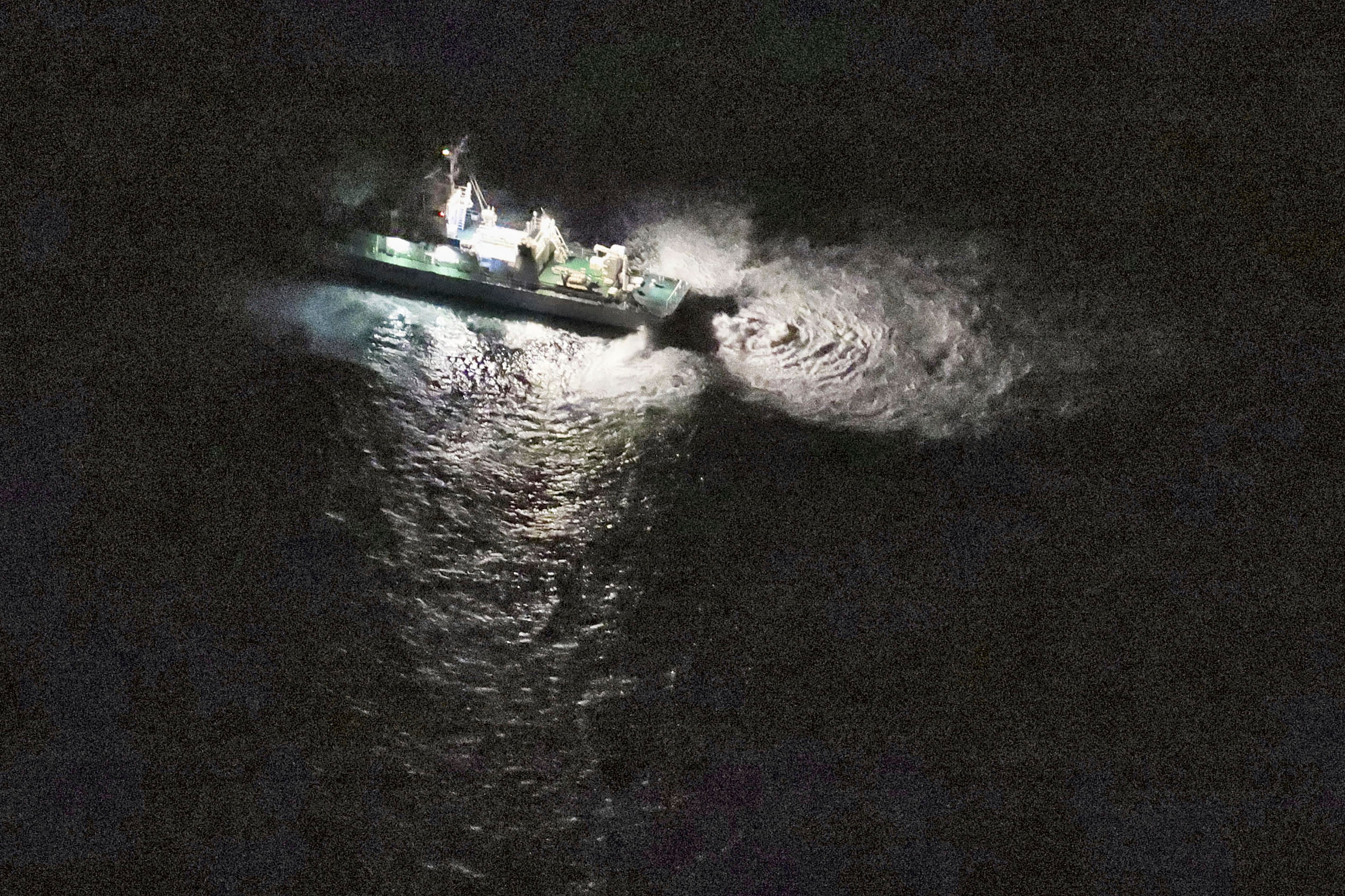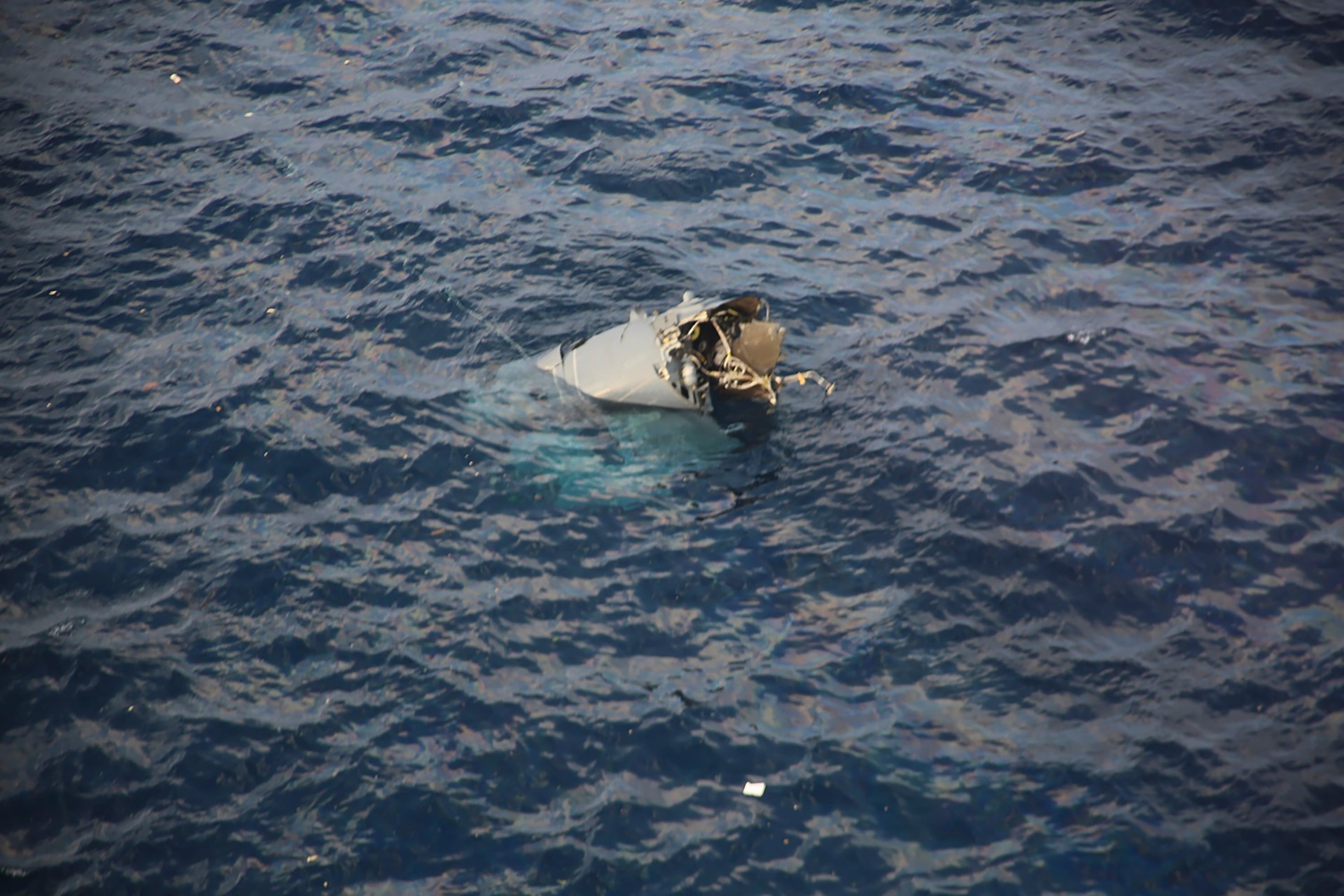Editor’s note: This is a developing story and will be updated as more information becomes available.
A rescue effort is underway to save the crew of a U.S. Air Force CV-22 Osprey that crashed Wednesday during a training mission off the southern coast of Japan, U.S. and Japanese officials said.
One airman who was recovered from the ocean has been pronounced dead, according to Japan’s coast guard. The U.S. Air Force said the cause of the crash and the conditions of seven other troops who were aboard the tiltrotor aircraft remain unknown.
The crew belongs to the Air Force’s 353rd Special Operations Wing at Yokota Air Base outside Tokyo, Air Force Special Operations Command confirmed in a release. Names of those killed in the accident will be withheld until their families are notified.

Four fatal Osprey crashes, including Wednesday’s mishap, have claimed the lives of at least 13 American troops in the past two years. This is the first fatal incident involving an Air Force-owned CV-22 since 2010.
The crash also marks the second deadly U.S. special operations mission this month, after five soldiers died Nov. 10 in a MH-60 Black Hawk helicopter crash in the eastern Mediterranean Sea.
The Osprey is a hybrid aircraft that takes off and lands like a helicopter, but during flight it can rotate its propellers forward and cruise much faster like an airplane. While the U.S. Marine Corps flies most of the Ospreys based in Japan, the Air Force also has some deployed there for special operations transport and supply missions around the Pacific.
In Okinawa, where about half of the 50,000 American troops in Japan are based, Gov. Denny Tamaki told reporters Wednesday that he would ask the U.S. military to suspend all Osprey flights in Japan.
Neither the Air Force nor the Marine Corps immediately answered Wednesday whether they would ground their fleets.
Japanese coast guard spokesperson Kazuo Ogawa said the coast guard received an emergency call Wednesday afternoon from a fishing boat near the crash site off Yakushima, an island south of Kagoshima on the southern main island of Kyushu.
Coast guard aircraft and patrol boats found one male crew member, who was later pronounced dead by a doctor at a nearby port, Ogawa said. They also found gray debris believed to be from the aircraft and an empty inflatable life raft in an area about 0.6 miles off the eastern coast of Yakushima, he said.
The coast guard said it planned to continue searching through the night.
Japanese Chief Cabinet Secretary Hirokazu Matsuno said the Osprey disappeared from radar a few minutes before the coast guard received the emergency call. The aircraft requested an emergency landing at the Yakushima airport about five minutes before it was lost from radar, NHK public television and other news outlets reported.
NHK quoted a Yakushima resident as saying he saw the aircraft turned upside down, with fire coming from one of its engines, and then an explosion before it fell to the sea.
Prime Minister Fumio Kishida said he planned to seek a further explanation from the U.S. military, but he declined to say whether he would seek a temporary suspension of Osprey operations in Japan.
Ogawa said the aircraft had departed from the U.S. Marine Corps Air Station Iwakuni in Yamaguchi prefecture and crashed on its way to Kadena Air Base on Okinawa.
Japanese Vice Defense Minister Hiroyuki Miyazawa said it had attempted an emergency sea landing and quoted the U.S. military as saying its pilot “did everything possible until the last minute.”
Yokota Air Base is home to U.S. Forces Japan and Fifth Air Force, the service’s organization focused on joint operations with Japan. Six CV-22 Ospreys have been deployed at Yokota, including the one that crashed.
The U.S. military owns hundreds of Ospreys across the Air Force, Navy and Marine Corps. The Air Force manages a fraction of the inventory at 52 airframes.
Last year, Air Force Special Operations Command ordered a temporary stand-down of its Osprey fleet following back-to-back safety incidents in which the Osprey’s clutch momentarily slipped and then re-engaged, leading to an uneven distribution of power to its massive rotors. The problem can cause the aircraft to lurch dangerously.
Two such problems, known as hard clutch engagements, happened in a six-week period that summer, along with two others that occurred since 2017, the Air Force said in August 2022. The Marine Corps and Navy have reported similar clutch slips, and each service has worked to address the issue in their aircraft.
The MV-22 Osprey, the Marine Corps variant, has been at the center of a series of deadly crashes in recent years, though a Corps spokesman said in July 2022 the aircraft’s rate of mishaps per flight hours was near the average mishap rate for the overall Marine aviation fleet.
In March 2022, four Marines were killed in Norway in an Osprey crash that the Marine Corps ultimately attributed to pilot error.
In June of the same year, five Marines were killed when their Osprey crashed in southern California. The service later said the mishap was caused by a hard clutch engagement on both sides of the aircraft.
In August 2023, an MV-22 crashed in northern Australia, killing three Marines. The incident is under investigation.
Nonfatal incidents continue to bedevil the fleet as well. In September, three Okinawa-based Marine Corps Ospreys were forced to land in Japan after cockpit warnings prompted pilots to divert from their scheduled flight paths.
And in October, an MV-22 carrying four Marines experienced a hard landing during a training event in Nevada. The Marine Corps’ initial assessment found the mishap, which injured one Marine, likely hadn’t resulted from mechanical issues, a Marine spokesman said.
Despite the series of mishaps, the military has reiterated its commitment to the Osprey.
“We’re very confident in the mitigation steps that we’ve done,” Air Force Special Operations Command boss Lt. Gen. Tony Bauernfeind said of mechanical concerns in September.
The CV-22 is “answering a long-held requirement that no other capability can answer in the special operations community,” he said.
Marine Corps Times staff reporter Irene Loewenson and Associated Press reporter Tara Copp contributed to this story.
Rachel Cohen is the editor of Air Force Times. She joined the publication as its senior reporter in March 2021. Her work has appeared in the Washington Post, the Frederick News-Post (Md.), Air and Space Forces Magazine, Inside Defense, Inside Health Policy and elsewhere.





